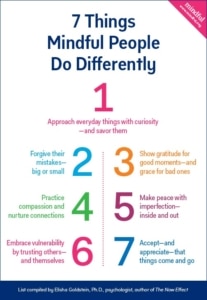Beyond Gifts and Traditions
As the year draws to a close and the chill of winter settles in, a familiar warmth begins to envelop our hearts and homes. Christmas, a holiday celebrated by millions around the world, invites us to reflect on its deeper meanings beyond the surface-level festivities. Have you ever paused to consider what Christmas truly represents? While its religious and spiritual significance is paramount for many, the holiday has evolved into a rich tapestry of cultural celebrations, each thread woven with themes of goodwill, compassion, and community. If you allow me with this exploration, we will delve into the profound essence of Christmas and ponder how we can transform this season into a meaningful moment in our lives.
At its core, Christmas is a celebration of the birth of Jesus Christ, a figure whose teachings of love, compassion, and forgiveness resonate across cultures and religions. For Christians, this holiday is a time of spiritual reflection, prayer, and connection with the divine. The nativity scene, with its humble beginnings in a stable, serves as a powerful reminder of the beauty found in simplicity and the importance of humility, while reflecting on how Jesus came into the world.
However, Christmas has also transcended its religious roots to become a cultural phenomenon. It is a time when families gather, communities come together, and traditions are passed down through generations. From the twinkling lights that adorn our homes to the carols that fill the air, the holiday season is infused with a sense of joy and togetherness for most people. Yet, amidst the hustle and bustle of shopping, decorating, and planning festive meals, we must ask ourselves: what is the true essence of this celebration?
In a world increasingly dominated by consumerism, it is easy to think the spirit of Christmas is about the act of gift-giving. The pressure to buy the perfect present or to outdo last year’s holiday haul can overshadow the more profound aspects of this season. While gifts can bring joy, they often lack the lasting significance that comes from genuine human connection.
I remember growing up with a real tree and all blue Christmas lights, globes and tinsel decorating that tree. I understand deeply that I was very blessed to grow up with those memories. There were people in the neighborhood that had much less. I will forever thank my parents for reminding me that we were lucky, asking what it meant to me and what about the other people that had less.
This Christmas, what would happen if we shifted our focus from material possessions to the gift of presence. (yes, I know some of you are already) The most meaningful moments often arise from shared experiences—gathering around the dinner table, sharing stories, or simply enjoying each other’s company. The laughter of loved ones, the warmth of a shared meal, and the comfort of familiar traditions create memories that linger long after the holiday season has passed.
This also reminds me of Willie Williams. (permission granted to use his name) Sadly, Willie is no longer with us. Many years ago, when I co-owned Varment Guard, Willie came to work with our company and over time through conversation and observation I came to understand that there were some addictions present and his struggles were often. Willie and I became close over that time. That Christmas I talked with my wife and suggested we invite him for dinner and gifts. I want to make very clear I did not do this because I was trying to save him. He became my friend. For the next 7 years he came to family celebrations, until he could not anymore and I missed him deeply.
Consider the impact of a heartfelt conversation with a friend or a family member you haven’t seen in a while. These moments of connection can be far more valuable than any physical gift. By prioritizing relationships over materialism, we can cultivate a deeper sense of belonging and community, which is at the heart of the Christmas spirit.
Acts of Kindness and Compassion!
Another profound aspect of Christmas is its emphasis on goodwill and compassion. The holiday season serves as a reminder to extend our hearts and hands to those in need. Whether through volunteering at a local shelter, donating to a charity, or simply reaching out to someone who may be feeling lonely, acts of kindness can have a ripple effect that transforms lives.
In many cultures, the act of giving is central to the Christmas celebration. However, it is essential to recognize that giving does not always have to be material. Sometimes, the most impactful gifts are those that come from the heart—offering your time, listening ear, or a helping hand. This season, let us embrace the spirit of giving by seeking out opportunities to uplift others. Remember Willie.
Imagine the joy of a child receiving a warm meal or a family finding comfort in a community that cares. These acts of compassion not only enrich the lives of those we help but also deepen our own sense of purpose and fulfillment. In this way, Christmas becomes a powerful catalyst for change, inspiring us to create a more compassionate world. The point to this paragraph is to think about what happens January 1st.
Traditions play a significant role in shaping our Christmas experience. From decorating the tree to singing carols, these rituals connect us to our past and to one another. However, it is essential to approach these traditions with intention.
As we engage in holiday customs, let us reflect on their significance. What do these traditions mean to us? How do they foster connection and community? By infusing our celebrations with mindfulness, we can transform routine activities into profound expressions of love and gratitude.
For instance, consider the tradition of baking cookies. Instead of viewing it as a chore, we can turn it into a cherished family event, where stories are shared, laughter abounds, and memories are created. Making chocolate chip cookies, sorry that snuck in there. By being present in these moments, we honor the spirit of Christmas and create a legacy of love that can be passed down through generations.
Ultimately, the question remains: how do we make Christmas an important moment in our lives? It begins with a conscious choice to seek meaning in the season. Rather than allowing the holiday to be defined by commercialism and superficiality, we can embrace its deeper significance.
This Christmas, let me challenge you by committing to cultivating a spirit of gratitude. Take time to reflect on the blessings in your life, the people who enrich your journey, and the lessons learned throughout the year. By fostering an attitude of gratitude, we can shift our perspective and find joy in the simple pleasures of the season.
Moreover, let us be open to the transformative power of Christmas. This holiday has the potential to inspire personal growth, healing, and renewal. Whether through acts of kindness, meaningful conversations, or moments of reflection, we can allow the spirit of Christmas to guide us toward a more profound understanding of ourselves and our place in the world.
I would like to encapsulate what is written above, so as we approach this Christmas season, let us remember that it is not merely a date on the calendar but an opportunity for profound connection, compassion, and reflection. By prioritizing relationships, embracing traditions with intention, and seeking meaning in our celebrations, we can transform this holiday into a powerful moment in our lives.
In a world that often feels divided, Christmas serves as a reminder of our shared humanity.It calls us to come together, to uplift one another, and to celebrate the beauty of life. So, as you prepare for the festivities, take a moment to reflect on what Christmas means to you. Let it be a time of love, joy, and profound connection—a season that resonates in your heart long after the decorations are taken down and the last carol has been sung.
Merry Christmas everyone, no matter how you celebrate.

